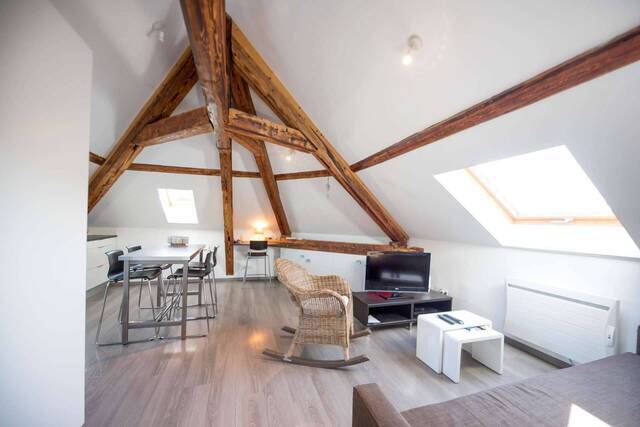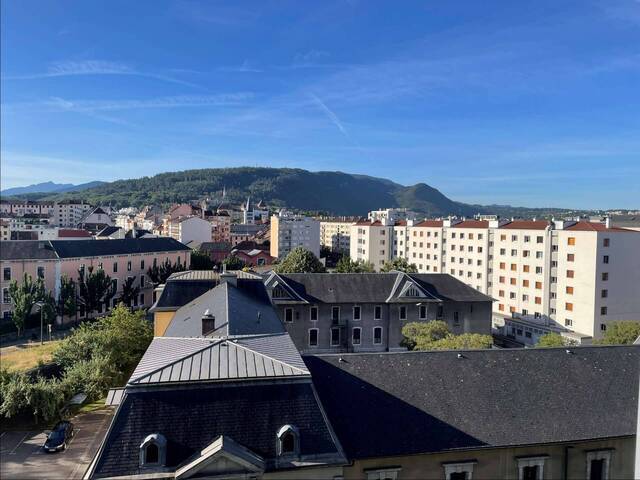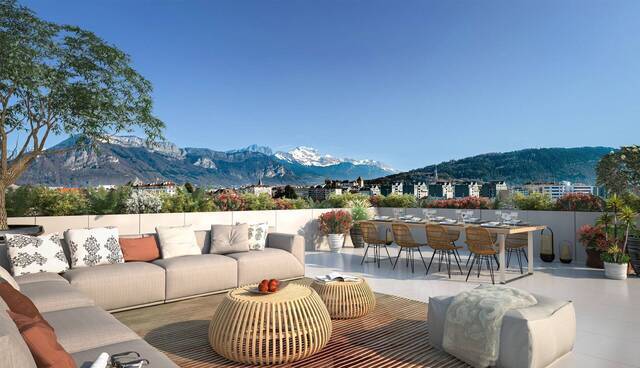Real estate Annecy

Annecy stroll. It can start from the park of the Imperial Hotel. A palace by its birth, in 1913, it saw crowned heads, stars of show business and politics pass by. Closed in 1965 due to its lack of profitability, it remained dormant for nearly 25 years. Rehabilitated into a convention center, hotel, restaurant, casino, and a magical botanical garden, it now seems moored at the end of the lake for eternity.
Stroll along the esplanade that runs along the lake, under plane trees dating from the Second Empire, then cross the Pâquier (or Champ de Mars). Despite a tenacious but false legend, it was not the donation made by an old lady to the municipality, on the condition that it be reserved for the public. No. For centuries, these very humid fields were used for grazing animals. (grazing in the local dialect, which will give Pâquier.) It was in the 17th century that a Count of Menton gifted a parcel he owned here to the Annecy regiment of which he was the colonel, for it to conduct its exercises. Since then, elected officials have ceaselessly acquired parcels as soon as they became available, and thus today the citizens own these seven hectares of pure wonder.
A thought here, on this meadow, for Marguerite Frichet-Avet, 37 years old, executed on May 18, 1793, accused of being at the origin of the uprising of Thônes, when it was mainly the courage she showed in rushing to the aid of the wounded, which designated her to the revolutionary executioners.
It is also here that on June 25, 1911, Swiss pilot Emile Taddeolli performed the first takeoff of an airplane. (DUFAUX5), but after a few meters the plane plunged into the lake. The pilot was fished out alive. He would die 9 years later, in another lake, that of Constance.
At the dawn of the 19th century, a project that did not see the light of day, for which however its author had obtained the concession, was abandoned. Indeed, he had (we can say) the good idea to die. Otherwise, we would have at this location a gigantic hotel, a racecourse, a casino, and a tramway……
A small iron bridge spans the Vassé canal and is named the “Pont des Amours” (Bridge of Love). Why? A rendezvous for lovers, or less prosaically a place where the oldest profession in the world was formerly practiced? Mystery! It allows access to the Jardins de L'Europe, in the Middle Ages, the Lombard meadows, an island outside the city walls, later connected to the city by successive landfills. The new name dates from around 1860, after these lands, drained, landscaped, were planted with about 1200 trees. On this occasion, and it is still there, the statue of Berthollet, our great scientist born in Talloires, companion of Bonaparte in Egypt, made Count, later, by the Emperor. The walk continues along Quai Napoléon III, named in memory of the visit of the sovereigns during the annexation of Savoy to France.
Opposite, we arrive at Place aux Bois. This is where firewood and construction timber arrived by boat from the forests around the lake. In the center of it, in front of the convent of the Sisters of Saint Joseph, stands the statue of Saint Francis de Sales. It is a few meters away, still visible today, the building that housed the first order of the Visitation, which he created with Sainte Jeanne de Chantal, where they stayed until 1610.
Then cross the bridge and, to the left, take the Quai du Semnoz. Along it is the superb church known as the Italians'. It was from 1610 to the revolution the seat of the Visitation and contained the relics of the founding saints. These were hidden at the castle of Duingt during the revolutionary turmoil. Today they are definitively at the basilica of the Visitation, which overlooks the city. John Paul II came to pray there on October 7, 1986.
Along the Thiou, the location where the old women used to wash their clothes can still be distinguished.
After the bridge facing the Palais de L'Isle, perhaps the most photographed or painted place in Annecy. Yet it owes its survival to a lack of credit from the municipality to finance its demolition in the 19th century. Built about nine hundred years ago, it was successively a prison, mint, princely dwelling, barracks, grain warehouse, old people's home. Today it's a cultural space.
Then enter Rue Perrière. You will pass one of the four gates that closed the city in very ancient times. You are really in the old town, nestled at the foot of the castle.
Today restaurants and shops line the street. You emerge onto Place des Eflècheres, at the foot of a ramp that leads to the castle. An old fountain was installed there in the 60s during the renovation works of the old town.
Extending, you access Rue de l’Ile lined with arcades. In its middle, you will pass a fountain in service since the 15th century. It is in this street and the next, Rue Sainte Claire, that the Tuesday market has been held for 850 years. The widest and main artery of the old town that leads to Place de la Manufacture. Under the First Empire, 1400 workers processed cotton. At the end is the Porte Saint Claire, through which one left the city to go to Chambéry.
A little before, a narrow street, Côte St Maurice allows access to the castle, which a visit is a must.
At the end of Semnoz, perched on the last rocky spur of it, overlooking the city and the lake, this stone sentinel scans the horizon. This location is so strategic that it is impossible it has not been occupied since there have been men in the Annecy basin.
But the oldest writings on it date back to the 13th century. Attacked, looted, burned, it knows all the vicissitudes of a stronghold. Louis XIII came in person to lay siege to it. The last battles were fought there in 1814.
Descend by the castle ramp, and you will find yourself in Place des Eflechères. In front of you, slightly to the right, engage in the Passage de l’Ile. You pass in front of the entrance to the old prisons and come out on Quai de l’Evêché. Go up it towards Ponts Morens. Pass Rue Jean Jacques Rousseau, in front of Madame de Warens' house, his muse. There's little room to admire the Renaissance-era St. Pierre Cathedral. Pass on the left side to cross the Bishop's gardens. You will end up in Rue Royale and be sure to sit on the edge of the St Jean well which after being stored at Sevrier for 175 years, found its place back in 1976. Taking the street to the right you will arrive at Notre Dame Church square.
In the 17th century, the Holy Shroud was displayed for a while, in front of which Françoise de Sionnaz, having had no children, came to ask for God's help. The following year, in 1567, a son was born to her who would become Saint François de Sales. The church was almost entirely destroyed in 1793 during the revolutionary turmoil, (only the bell tower without the spire remained) then rebuilt between 1846 and 1851.
To the left of the Church, a small cramped building is attached to it. It is the old town hall of Annecy. In front of its entrance, a wrought iron balcony with, in its center, a rarity: a fish emblem of the city.
Pass under the porch, go up Rue Filaterie, then left Rue Grenette and you arrive at Saint Maurice Church, the oldest in Annecy.
Pass to its left by the Canal du Vassé and you return to the town hall square, Sardinian architecture, built in 1848.
Here is a quick overview of Annecy's past through the visit of its old town. If today Annecy is a city resolutely turned towards the future, let's have an admiring thought for those men who, throughout the 20th century, knew they were inheriting a real treasure. They spared no effort to preserve it often from destruction, maintain it and pass it on to us. Let them be deeply thanked. Text by Christian SBAFFO





